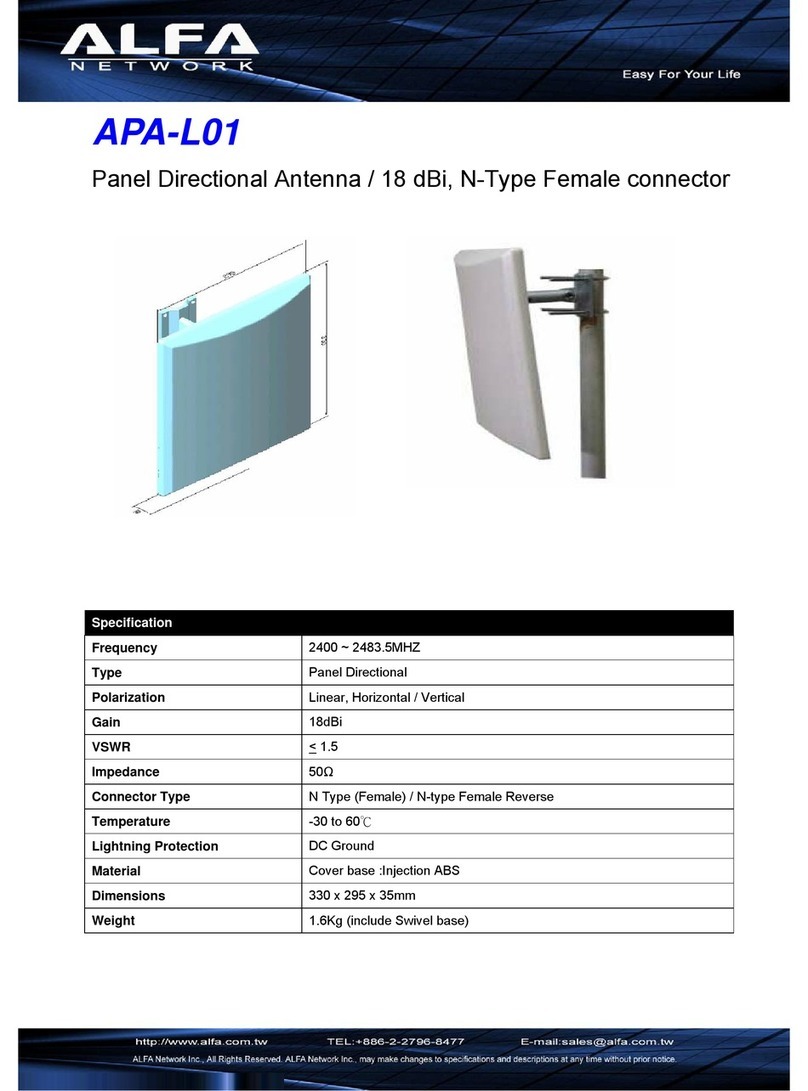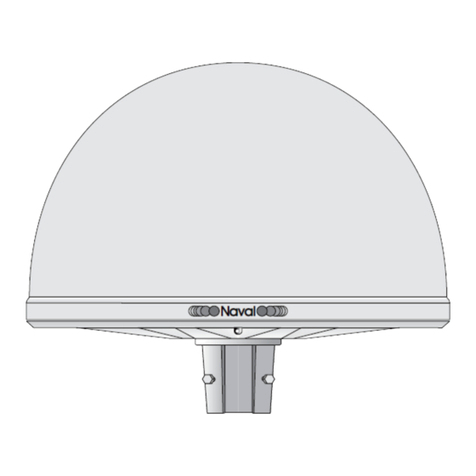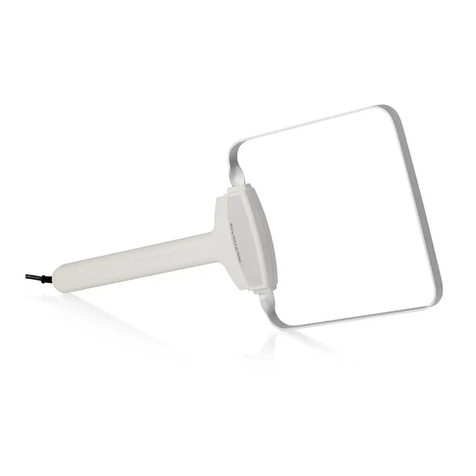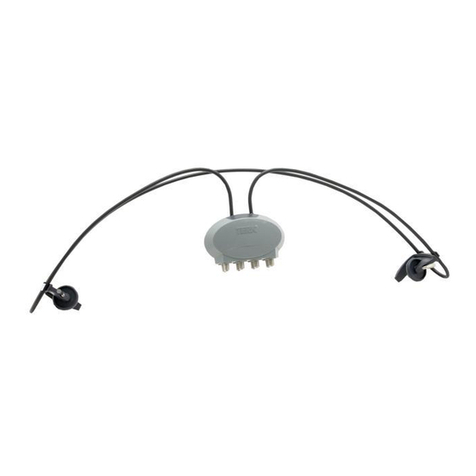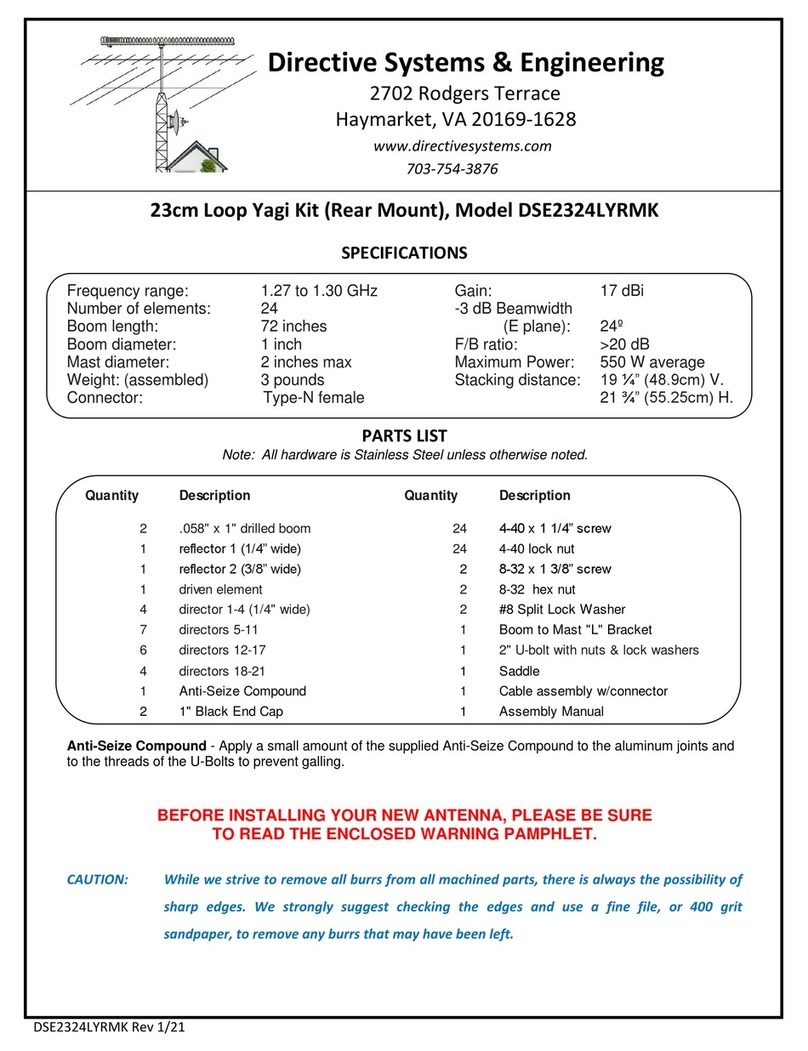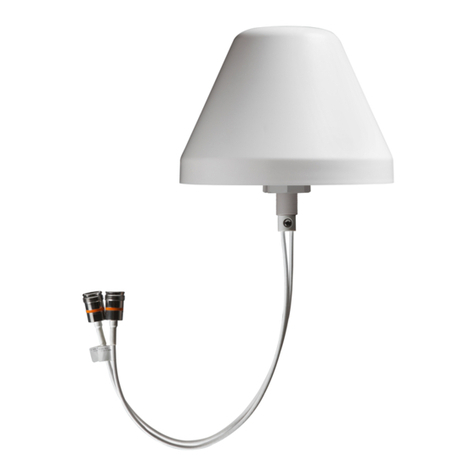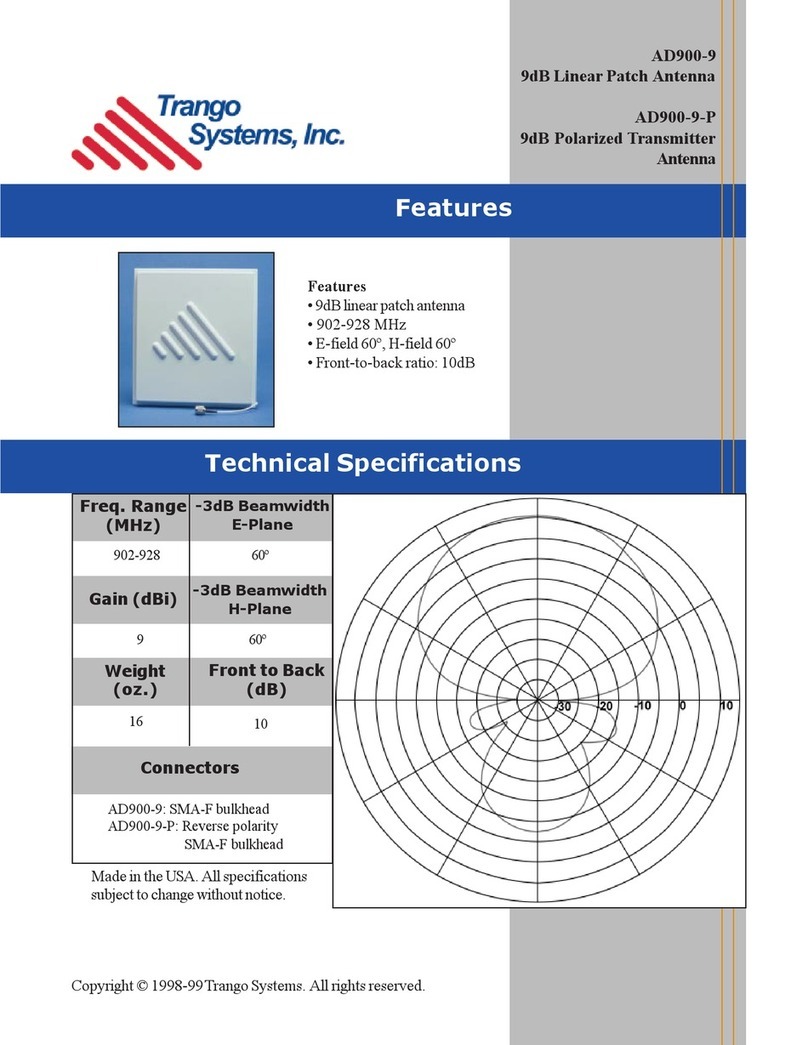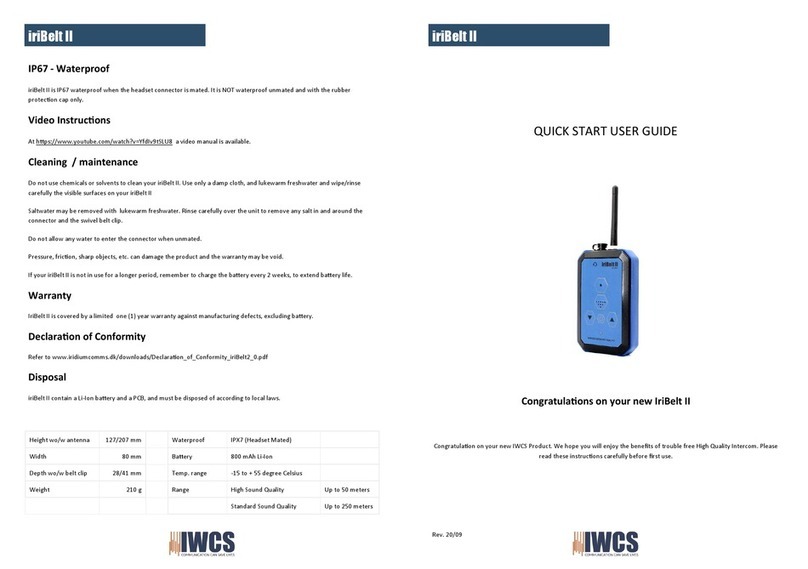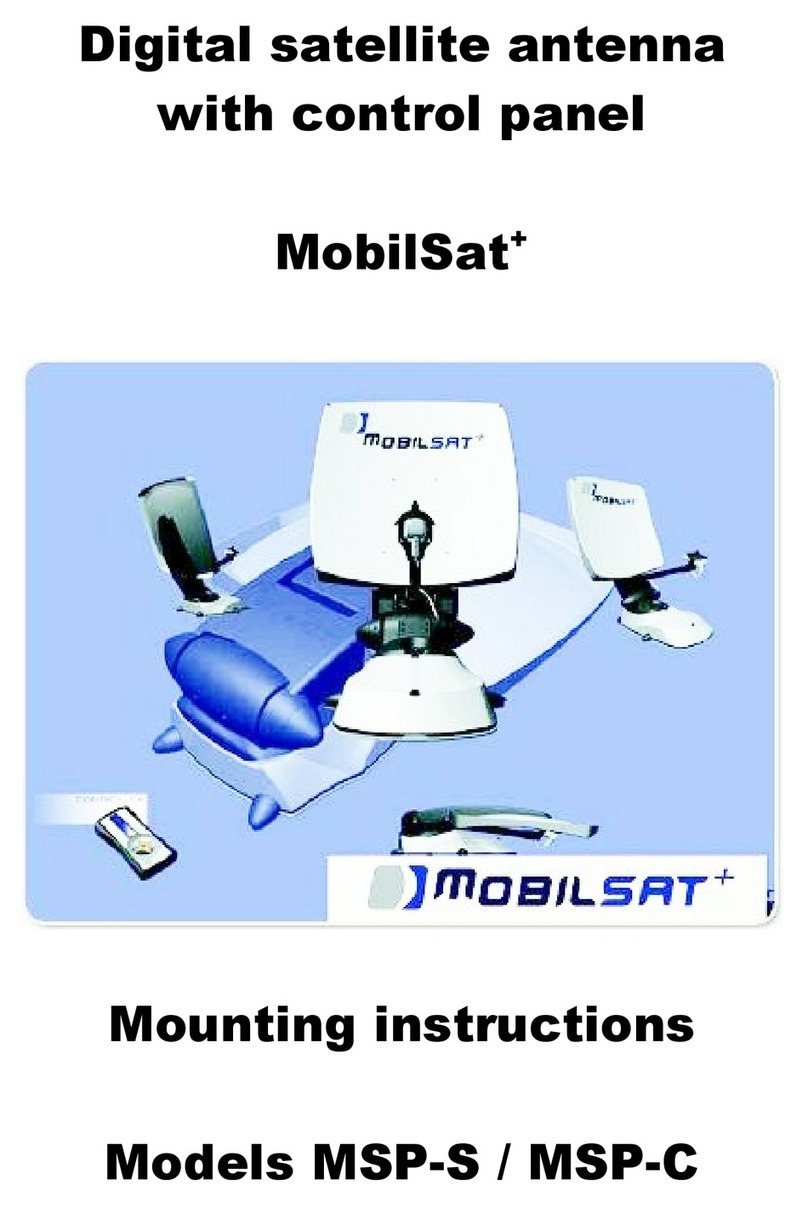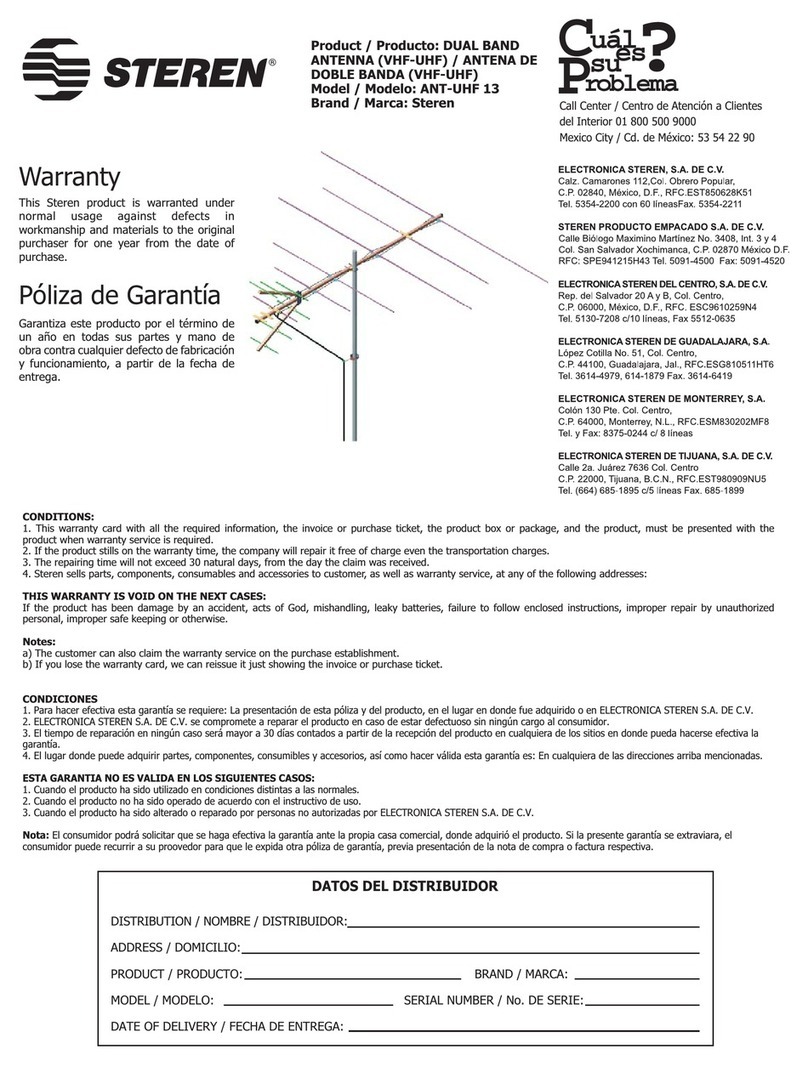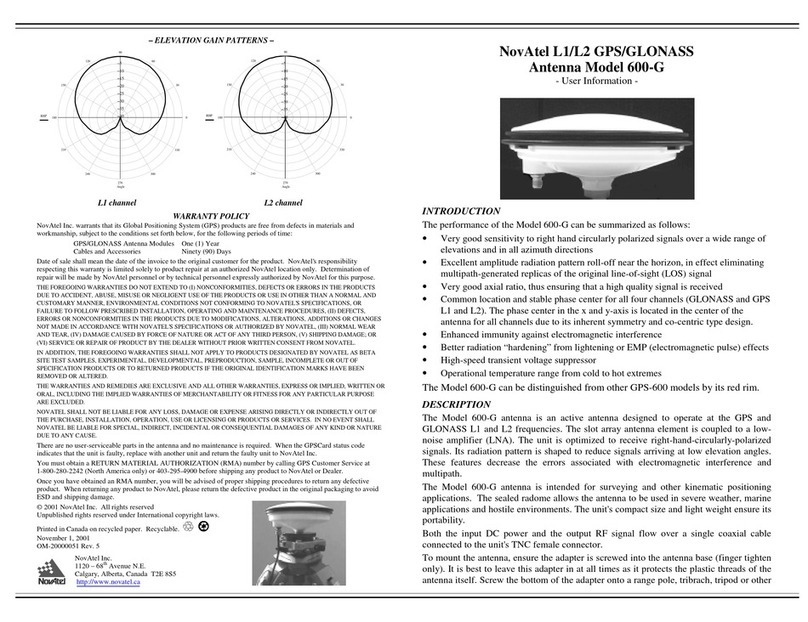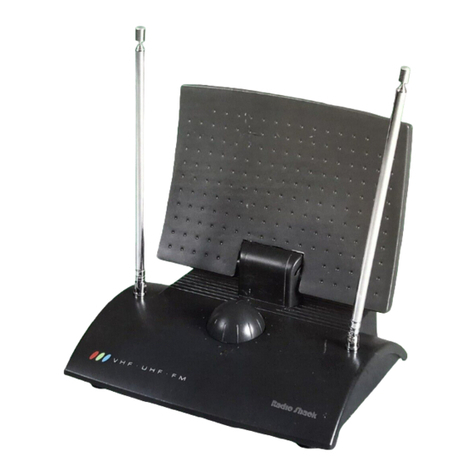
Description
The light weight and compact SK-600 antenna is intended for surveying
and other kinematic positioning applications, and it is designed to operate
at both the GPS L1 and L2 frequencies. The SK-600 features a sealed
radome, enabling its use in severe weather, hostile environments or for
marine applications.
The SK-600 antenna has a major advantage above the choke ring ground
plane antenna because it is lighter by several pounds and much smaller.
The pattern roll-off from boresight to antenna horizon (0°elevation angle)
is in the order of 15 to 20 dB. This roll-off compares well to a patch antenna
roll-off mounted on a large choke ring ground plane. In addition, the
maximum directivity at 90°elevation angle (antenna boresight) is typically
8 to 10 Decibels (dB). This is on average 5 dB more than a typical patch
antenna.
A very important feature of the SK-600 is that there is no difference in
phase center location between the L1 and L2 channels. In fact, due to the
inherent symmetry and co-centric type design of the SK-600 antenna, the
phase center in the x and y-axis is located in the center of the antenna for
both channels. This feature enables the SK-600 antenna to be very suitable
for long baseline applications such as tectonic plate movement monitoring
or telescope alignment. Previously, base stations with very long GPS
baselines had to use a choke ring type antenna. Because the choke ring
antenna sees a different GPS satellite constellation, a physical vertical offset
(z-axis) in the order of 20 mm existed between the L1 and L2 channels. That
vertical phase center offset, which would have to be corrected to obtain
accurate results, does not exist when you use the SK-600 antenna.
One problem faced by all antennas is the presence of signal error associated
with electromagnetic interference and multipath. The SK-600 antenna
decreases the chance of errors by incorporating the following features:
•It has a slot array element that is coupled to a low-noise amplifier
(LNA)
•It is optimized to receive right-hand-circularly-polarized signals
•Its radiation pattern is shaped to reduce signals arriving at low
elevation angles
Set-up
To setup your antenna, follow these instructions:
•To mount the antenna, screw the bottom of the adapter onto a range
pole, tribrach, tripod or other equivalent mount.
•The antenna receives power over a single coaxial cable that functions
as well to output the RF signal flow. Attach the coaxial cable from the
antenna connector to the antenna port on your receiver.
Mechanical Drawings
71&
)(0
/(
&211(&725
3+$6(&(17(5/$%(/
81&
'
3725
&211(&725
&2
(5
3+
6(
&(17(5
7
3(
0(
685(
7,3
+2/'(5
OOGLPHQVLRQVDUHLQPLOOLPHWHUVPP
ZKHUH
LQFK
PP
1DPHSODWH
'
37(5
%RWWRP9LHZ
7RS9LHZ
6LGH9LHZ
H/WRev: X P/N: xxxxxxxx
MADE IN CANADA
,,,,,,,,,,,,,,,,,,,,,,,,,,,,,,,,,
XXXXXXXXXXX
PP
PPPP
,OOXVWUDWLRQRQO\PD\FKDQJH
,OOXVWUDWLRQRQO\PD\FKDQJH
6.
www.so k ki a. c om
